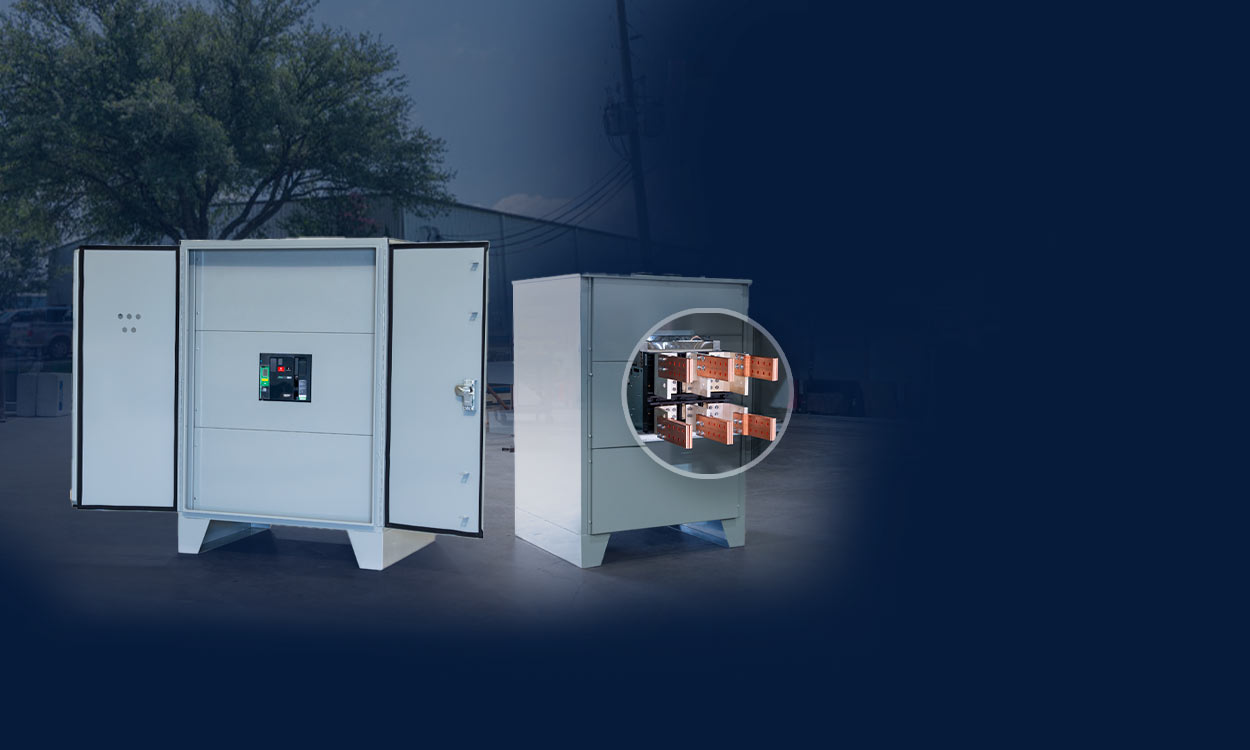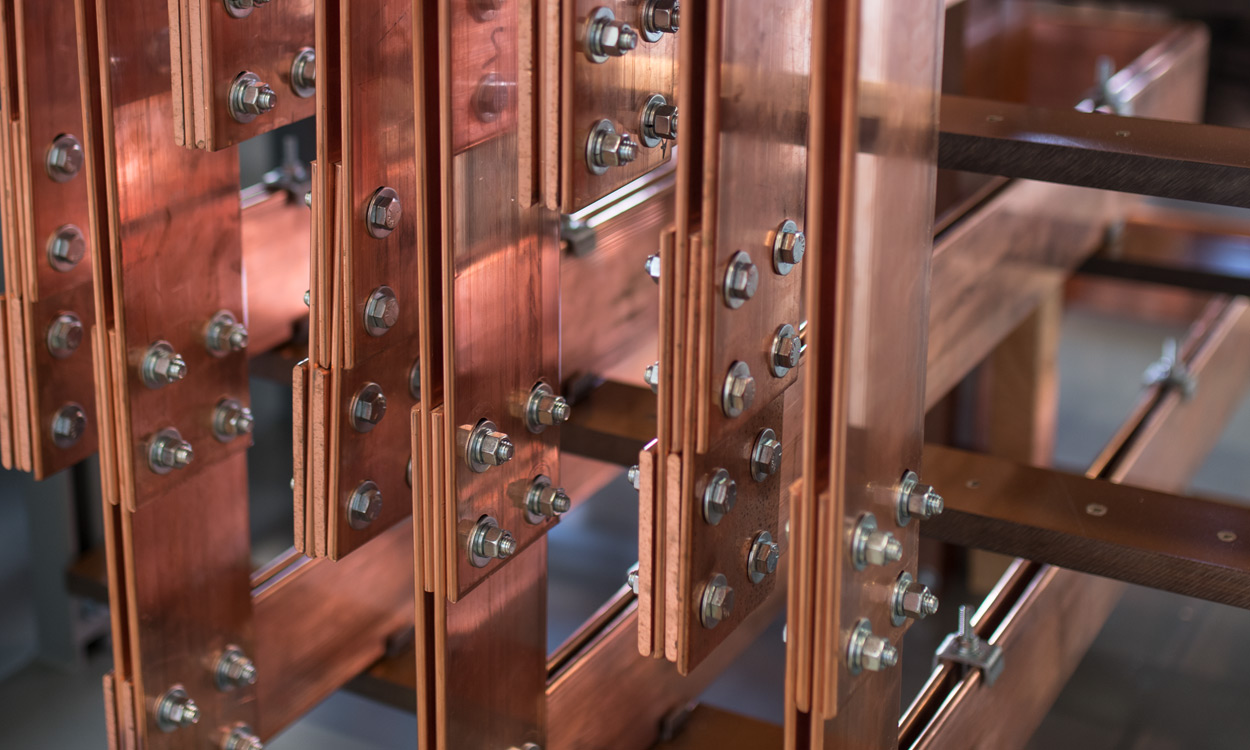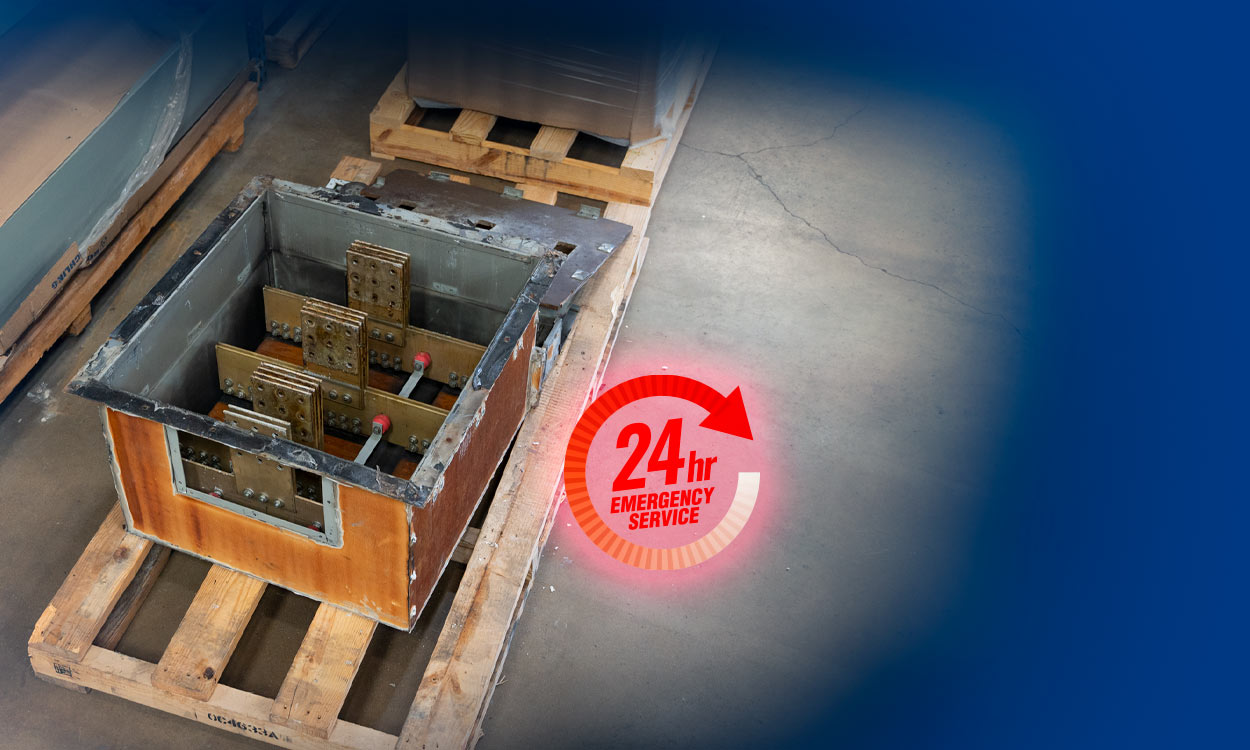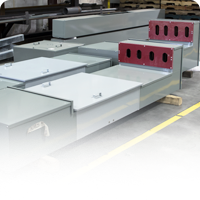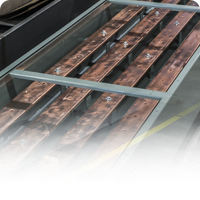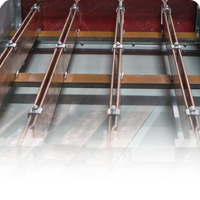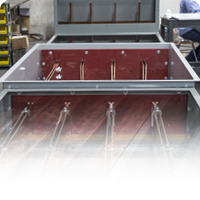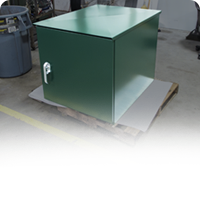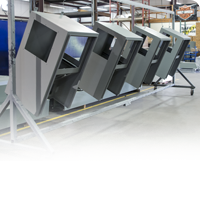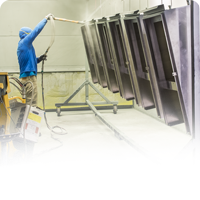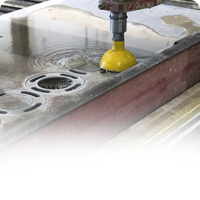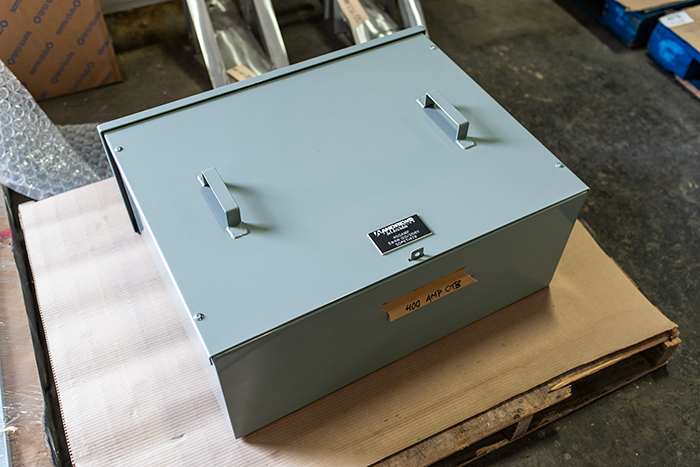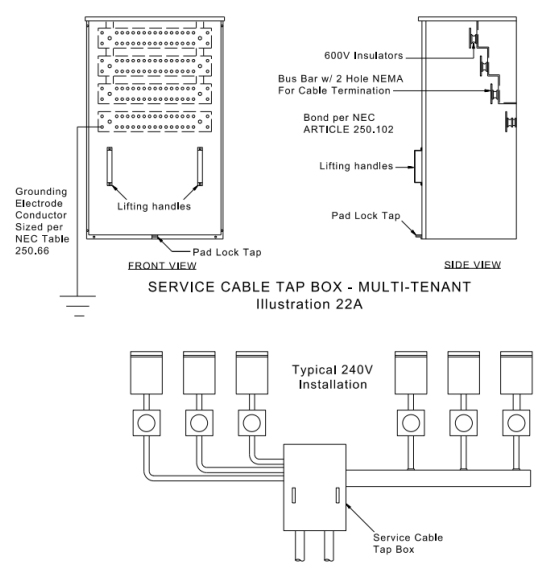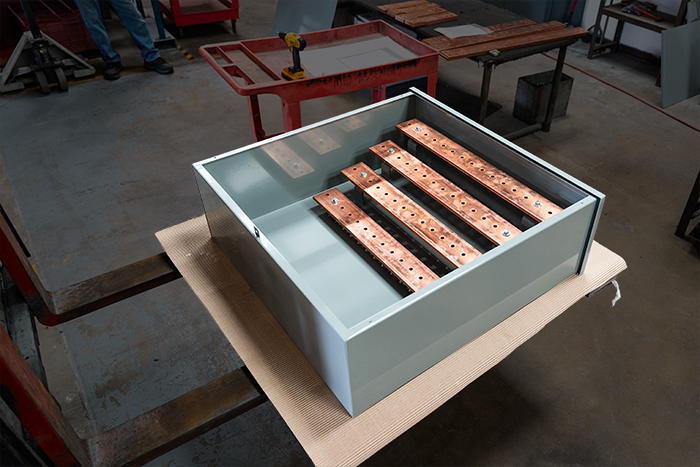Cable Tap Boxes
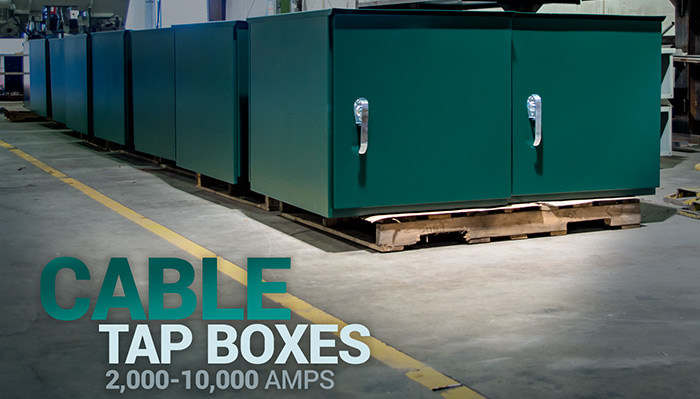
A cable tap box is an electrical enclosure that allows power distribution of busway with cable and conduit or where loads served by busway are connected without the need for overcurrent protection.
Generator Tap Box, Generator Connection Boxes are designed for use as a temporary service connection point between portable power units and the facility service entrance. When normal utility power is interrupted for long periods of time in case of a natural disaster or utility system failure, cable tap boxes may become necessary to bring in portable generators to provide power or augment emergency generator sets.
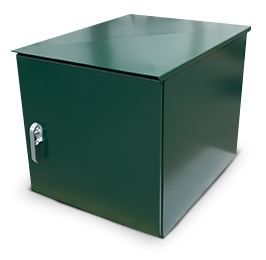
We offer indoor and outdoor cable tap boxes rated from 2,000 amps to 10,000 amps per Centerpoint Energy standards. Call us today at 281-372-0440 to talk to us or to order.
Have a busduct burn-up? Give us a call to meet you at your project, we can make all necessary field measurements and have your replacement buss duct ready in no time.
Wall Mounted Cable Tap Boxes: Providing Safe and Organized Electrical Connections
Wall mounted cable tap boxes are crucial components in various electrical systems, offering a safe and organized enclosure for cable connections. They serve numerous purposes, from facilitating power distribution to enabling temporary connections for generators.
Based on the Centerpoint Service Standards on section 419.5:
Service Cable Tap Box – Multi-Tenant Services: In Multiple-Tenant buildings where additional services are likely, a bus conductor service cable tap box may be required similar to Illustration 22A, (see below). A Multiple occupancy service usually requires that Service Conductors be in a sealable weather-tight wiring tap box similar to Illustration 22B(see below).
From the Point of Delivery, Service Conductors must enter directly into the Service Cable Tap Box. Service Entrance Conductor line taps shall be made in the Tap Box by the electrical contractor. Service Conductor extensions or taps(daisy chain) are prohibited from the Tap Box. For three phase service fed from a multi-tenant line gutter, the electrical contractor is responsible for providing and maintaining A-B-C clockwise rotation to the line side of the self-contained meter mounting device. Accepted grounding and bonding practices for multi-meter installations are shown in Illustration 21(page 56). In addition, the customer is responsible for bonding the Service Tap Box per NEC Table 250.102(C)(1).
Understanding Cable Tap Boxes:
These boxes are essentially enclosures, typically made of sheet metal, designed to house cable terminations and connections. They come in various sizes and configurations to accommodate different applications and the number of cables involved.
Key Features and Benefits:
- Safety: Cable tap boxes protect electrical connections from accidental contact, dust, moisture, and other environmental hazards. This is especially important in areas prone to harsh conditions or where accidental contact with live wires poses a risk.
- Organization: By enclosing and separating cables within the box, tap boxes promote better organization and labeling, simplifying future maintenance and troubleshooting. This is particularly advantageous in complex electrical systems with numerous branching cables.
- Accessibility: Most tap boxes feature hinged doors or removable covers for easy access to the enclosed connections. This facilitates inspection, maintenance, and modifications when needed.
- Durability: Depending on the material and NEMA rating, cable tap boxes can withstand various environmental conditions, ensuring long-lasting performance.
Applications of Wall-Mounted Cable Tap Boxes:
- Power Distribution: In commercial and industrial settings, tap boxes serve as junction points for distributing power from main electrical panels to branch circuits.
- Generator Connections: These boxes provide a safe and secure connection point for portable generators during power outages or maintenance.
- Lighting Control Systems: Tap boxes house the necessary connections and components for controlling lighting circuits in buildings.
- Communication Systems: They can also house cables and connections for communication systems, such as telephone lines and data cables.
Choosing the Right Wall-Mount Cable Tap Box:
Selecting the appropriate wall-mount cable tap box requires considering several factors, including:
Amperage and voltage rating: The box must be compatible with the electrical load it will handle.
Number and size of cables: Ensure the box has sufficient space and appropriate knockouts for the cables being used.
Environmental conditions: Choose a NEMA-rated enclosure suitable for the intended location’s moisture and dust exposure.
By understanding the purpose, features, and selection criteria of wall mounted cable tap boxes, you can ensure safe, organized, and efficient electrical connections in various applications.
